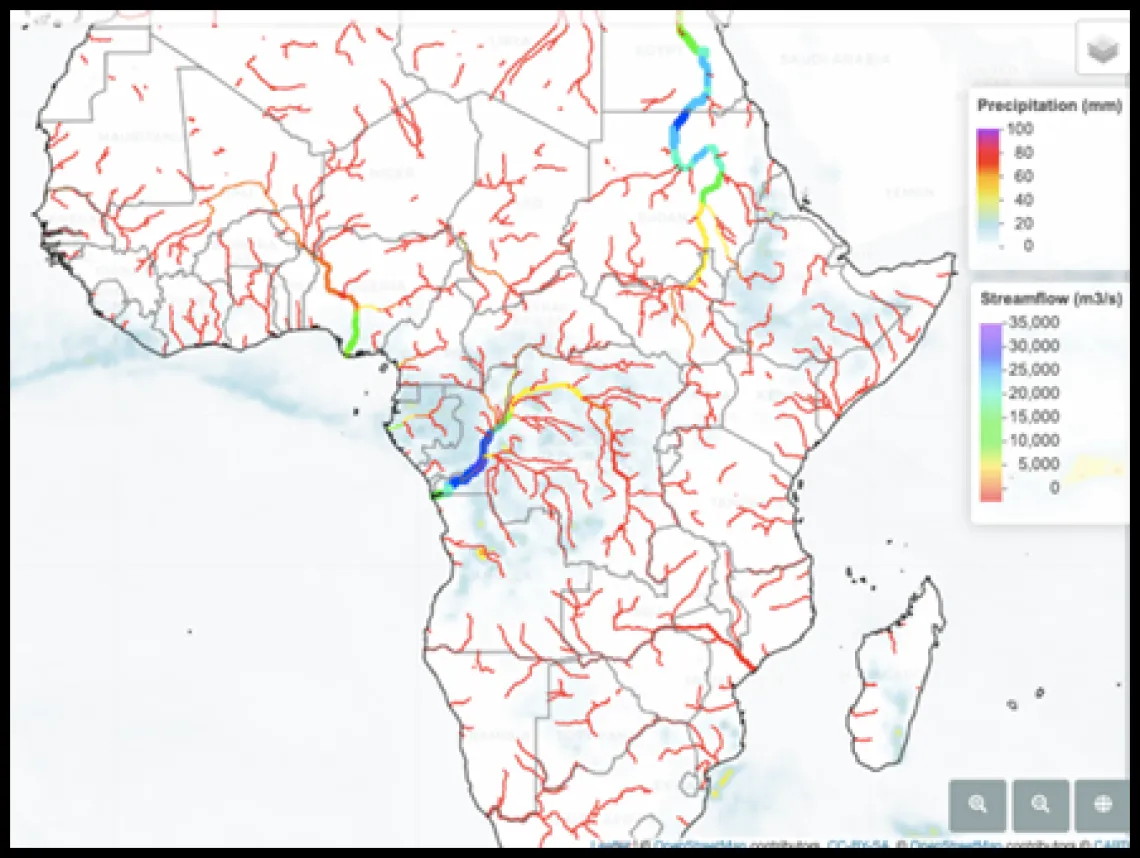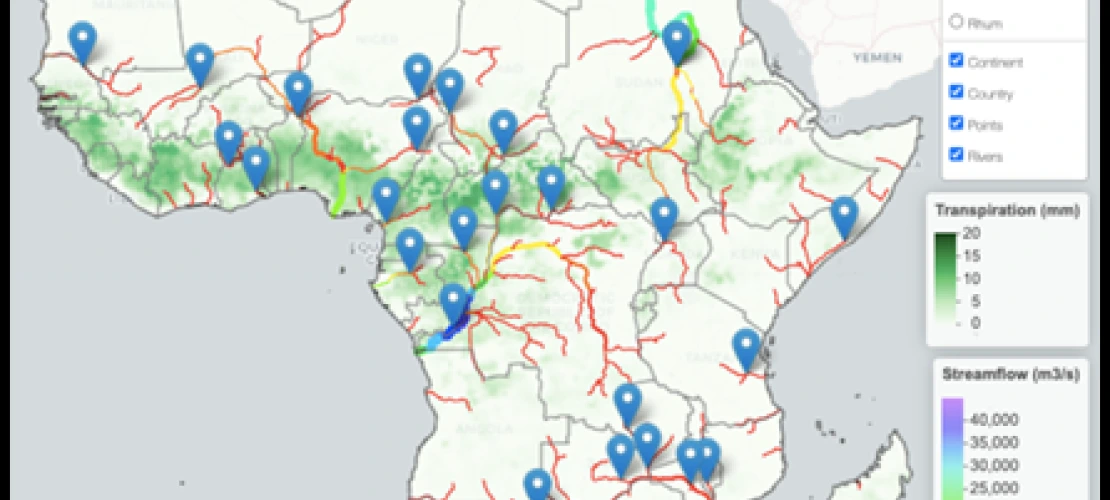Improvements to the African Flood and Drought Monitor (AFDM)
Closer to Real Time and Faster to Display

Estimated streamflow over the updated river network, which has 23,788 reaches.
The African Flood and Drought Monitor (AFDM) was developed by Princeton University and Princeton Climate Institute, in collaboration with the International Center for Integrated Water Resources Management (ICIWaRM) and UNESCO's G-WADI major initiative. It is a state-of-the-art tool, now maintained and updated by the University of Southampton, that combines historical and near real-time monitoring of hydrologic conditions plus seven-day and seasonal forecasting. The monitor has been used to study and improve water security and regional security throughout Africa through studies of drought resilience, infrastructure impacts, epidemics, migration, and child health.
Many developing countries have few on-the-ground rain and stream gauges, which is problematic for flood prediction and early warning where time saved = lives saved. This project has brought the AFDM 6-9 hours closer to real-time by having it check more often for new weather information from NOAA’s Global Data Assimilation System, and use this to quickly update the system for use in emergency management.
The speed at which maps and the information on them appears is also critical, since the internet speed and bandwidth in developing countries is generally limited. This project tested and is implementing a new data rendering approach for the river network vector data that is increasing rendering speed by over 90%. We now also allow for display of additional variables of interest to water professionals, such as temperature and evapotranspiration.

